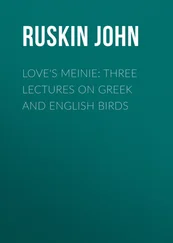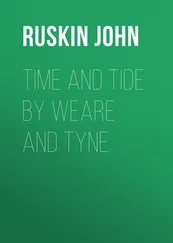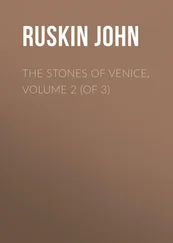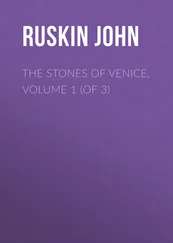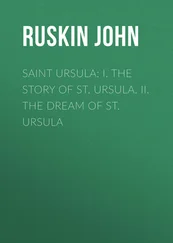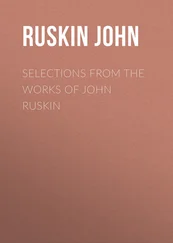John Ruskin - Proserpina, Volume 2
Здесь есть возможность читать онлайн «John Ruskin - Proserpina, Volume 2» — ознакомительный отрывок электронной книги совершенно бесплатно, а после прочтения отрывка купить полную версию. В некоторых случаях можно слушать аудио, скачать через торрент в формате fb2 и присутствует краткое содержание. Жанр: foreign_antique, Биология, literature_19, foreign_edu, на английском языке. Описание произведения, (предисловие) а так же отзывы посетителей доступны на портале библиотеки ЛибКат.
- Название:Proserpina, Volume 2
- Автор:
- Жанр:
- Год:неизвестен
- ISBN:нет данных
- Рейтинг книги:5 / 5. Голосов: 1
-
Избранное:Добавить в избранное
- Отзывы:
-
Ваша оценка:
- 100
- 1
- 2
- 3
- 4
- 5
Proserpina, Volume 2: краткое содержание, описание и аннотация
Предлагаем к чтению аннотацию, описание, краткое содержание или предисловие (зависит от того, что написал сам автор книги «Proserpina, Volume 2»). Если вы не нашли необходимую информацию о книге — напишите в комментариях, мы постараемся отыскать её.
Proserpina, Volume 2 — читать онлайн ознакомительный отрывок
Ниже представлен текст книги, разбитый по страницам. Система сохранения места последней прочитанной страницы, позволяет с удобством читать онлайн бесплатно книгу «Proserpina, Volume 2», без необходимости каждый раз заново искать на чём Вы остановились. Поставьте закладку, и сможете в любой момент перейти на страницу, на которой закончили чтение.
Интервал:
Закладка:
29. Whatever we call them, the things themselves are, throughout all the species of violets, developed in the running and weedy varieties, and much subdued in the beautiful ones; and generally the pansies have them, large, with spear-shaped central leaves; and the violets small, with heart-shaped leaves, for more effective decoration of the ground. I now note the characters of each species in their above given order.
30. I. VIOLA REGINA. Queen Violet. Sweet Violet. 'Viola Odorata,' L., Flora Danica, and Sowerby. The latter draws it with golden centre and white base of lower petal; the Flora Danica, all purple. It is sometimes altogether white. It is seen most perfectly for setting off its colour, in group with primrose,—and most luxuriantly, so far as I know, in hollows of the Savoy limestones, associated with the pervenche, which embroiders and illumines them all over. I believe it is the earliest of its race, sometimes called 'Martia,' March violet. In Greece and South Italy even a flower of the winter.
"The Spring is come, the violet's gone ,
The first-born child of the early sun.
With us, she is but a winter's flower;
The snow on the hills cannot blast her bower,
And she lifts up her dewy eye of blue
To the youngest sky of the selfsame hue.
And when the Spring comes, with her host
Of flowers, that flower beloved the most
Shrinks from the crowd that may confuse
Her heavenly odour, and virgin hues.
Pluck the others, but still remember
Their herald out of dim December,—
The morning star of all the flowers,
The pledge of daylight's lengthened hours,
Nor, midst the roses, e'er forget
The virgin, virgin violet." 4 4 A careless bit of Byron's, (the last song but one in the 'Deformed Transformed'); but Byron's most careless work is better, by its innate energy, than other people's most laboured. I suppress, in some doubts about my 'digamma,' notes on the Greek violet and the Ion of Euripides;—which the reader will perhaps be good enough to fancy a serious loss to him, and supply for himself.
3. It is the queen, not only of the violet tribe, but of all low-growing flowers, in sweetness of scent—variously applicable and serviceable in domestic economy:—the scent of the lily of the valley seems less capable of preservation or use.
But, respecting these perpetual beneficences and benignities of the sacred, as opposed to the malignant, herbs, whose poisonous power is for the most part restrained in them, during their life, to their juices or dust, and not allowed sensibly to pollute the air, I should like the scholar to re-read pp. 251, 252 of vol. i., and then to consider with himself what a grotesquely warped and gnarled thing the modern scientific mind is, which fiercely busies itself in venomous chemistries that blast every leaf from the forests ten miles round; and yet cannot tell us, nor even think of telling us, nor does even one of its pupils think of asking it all the while, how a violet throws off her perfume!—far less, whether it might not be more wholesome to 'treat' the air which men are to breathe in masses, by administration of vale-lilies and violets, instead of charcoal and sulphur!
The closing sentence of the first volume just now referred to—p.254—should also be re-read; it was the sum of a chapter I had in hand at that time on the Substances and Essences of Plants—which never got finished;—and in trying to put it into small space, it has become obscure: the terms "logically inexplicable" meaning that no words or process of comparison will define scents, nor do any traceable modes of sequence or relation connect them; each is an independent power, and gives a separate impression to the senses. Above all, there is no logic of pleasure, nor any assignable reason for the difference, between loathsome and delightful scent, which makes the fungus foul and the vervain sacred: but one practical conclusion I (who am in all final ways the most prosaic and practical of human creatures) do very solemnly beg my readers to meditate; namely, that although not recognized by actual offensiveness of scent, there is no space of neglected land which is not in some way modifying the atmosphere of all the world ,—it may be, beneficently, as heath and pine,—it may be, malignantly, as Pontine marsh or Brazilian jungle; but, in one way or another, for good and evil constantly, by day and night, the various powers of life and death in the plants of the desert are poured into the air, as vials of continual angels: and that no words, no thoughts can measure, nor imagination follow, the possible change for good which energetic and tender care of the wild herbs of the field and trees of the wood might bring, in time, to the bodily pleasure and mental power of Man.
32. II. VIOLA PSYCHE. Ophelia's Pansy.
The wild heart's-ease of Europe; its proper colour an exquisitely clear purple in the upper petals, gradated into deep blue in the lower ones; the centre, gold. Not larger than a violet, but perfectly formed, and firmly set in all its petals. Able to live in the driest ground; beautiful in the coast sand-hills of Cumberland, following the wild geranium and burnet rose: and distinguished thus by its power of life, in waste and dry places, from the violet, which needs kindly earth and shelter.
Quite one of the most lovely things that Heaven has made, and only degraded and distorted by any human interference; the swollen varieties of it produced by cultivation being all gross in outline and coarse in colour by comparison.
It is badly drawn even in the 'Flora Danica,' No. 623, considered there apparently as a species escaped from gardens; the description of it being as follows:—
"Viola tricolor hortensis repens, flore purpureo et cœruleo, C.B.P., 199." (I don't know what C.B.P. means.) "Passim, juxta villas."
"Viola tricolor, caule triquetro diffuso, foliis oblongis incisis, stipulis pinnatifidis," Linn. Systema Naturæ, 185.
33. "Near the country farms"—does the Danish botanist mean?—the more luxuriant weedy character probably acquired by it only in such neighbourhood; and, I suppose, various confusion and degeneration possible to it beyond other plants when once it leaves its wild home. It is given by Sibthorpe from the Trojan Olympus, with an exquisitely delicate leaf; the flower described as "triste et pallide violaceus," but coloured in his plate full purple; and as he does not say whether he went up Olympus to gather it himself, or only saw it brought down by the assistant whose lovely drawings are yet at Oxford, I take leave to doubt his epithets. That this should be the only Violet described in a 'Flora Græca' extending to ten folio volumes, is a fact in modern scientific history which I must leave the Professor of Botany and the Dean of Christ Church to explain.
34. The English varieties seem often to be yellow in the lower petals, (see Sowerby's plate, 1287 of the old edition), crossed, I imagine, with Viola Aurea, (but see under Viola Rupestris, No. 12); the names, also, varying between tricolor and bicolor—with no note anywhere of the three colours, or two colours, intended!
The old English names are many.—'Love in idleness,'—making Lysander, as Titania, much wandering in mind, and for a time mere 'Kits run the street' (or run the wood?)—"Call me to you" (Gerarde, ch. 299, Sowerby, No. 178), with 'Herb Trinity,' from its three colours, blue, purple, and gold, variously blended in different countries? 'Three faces under a hood' describes the English variety only. Said to be the ancestress of all the florists' pansies, but this I much doubt, the next following species being far nearer the forms most chiefly sought for.
35. III. VIOLA ALPINA. 'Freneli's Pansy'—my own name for it, from Gotthelf's Freneli, in 'Ulric the Farmer'; the entirely pure and noble type of the Bernese maid, wife, and mother.
Читать дальшеИнтервал:
Закладка:
Похожие книги на «Proserpina, Volume 2»
Представляем Вашему вниманию похожие книги на «Proserpina, Volume 2» списком для выбора. Мы отобрали схожую по названию и смыслу литературу в надежде предоставить читателям больше вариантов отыскать новые, интересные, ещё непрочитанные произведения.
Обсуждение, отзывы о книге «Proserpina, Volume 2» и просто собственные мнения читателей. Оставьте ваши комментарии, напишите, что Вы думаете о произведении, его смысле или главных героях. Укажите что конкретно понравилось, а что нет, и почему Вы так считаете.




